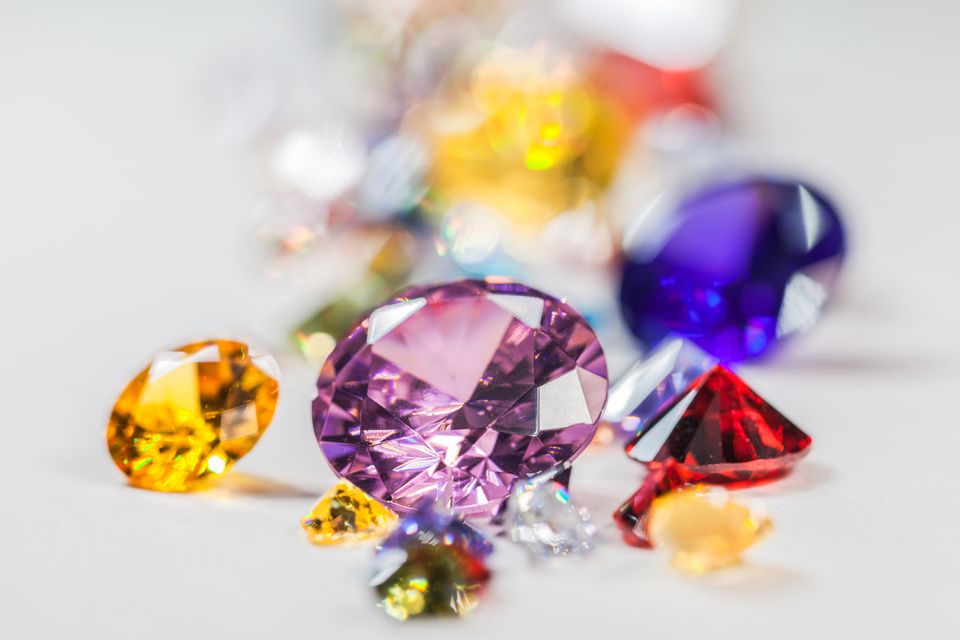Understanding the Timeless Appeal of the Regal Ruby
In the West we don't have a very deep relationship with gemstones. We have our heads turned by the brilliance of diamonds and view them as the ultimate symbol of commitment, thus their popularity for engagement and wedding jewelry. But that is something that we, as a culture, were taught.
The diamond as the ultimate engagement ring only began to become a 'thing' in the mid nineteen forties, when a De Beers advertising campaign first ran with the now iconic tagline: "A Diamond is Forever."
The reality is, that prior to that, we often considered a different gemstone a girl's best friend; the ruby.
What Makes a Ruby?
The ruby is one of the hardest of the popular natural gemstones, second only in fact to diamonds. It belongs to a family of minerals known as Corundum and is created by a combination of aluminum and oxygen.
When they are cut, experts prefer to cut them into cushion or oval shapes, avoiding round shapes if possible. This is because these shapes preserve the largest possible part of the original rough stone. When expertly cut however a round ruby can be a truly stunning choice, but only if the craftsman truly knows what they are doing.
Because they belong to the same family as the sapphire, what is and isn't classified as a ruby can be a little confusing. The ruby gets its name from the Latin for red, ruber, and so as you would expect it encompasses many red shades, from slight orange to strong purple.
To some a pure red ruby is ideal, but the darker stones that lean towards purple have a dramatic look that is strikingly beautiful and the lighter shades also have a charm and elegance all of their own, although they are sometimes confused with Pink corundum, which is actually classed as a pink sapphire.
Rubies in Ancient History
Rubies crop up a lot in ancient history, far more often than diamonds.They are mentioned four times in the Bible, with all mentions alluding to beauty and wisdom. In the first century AD the famous Roman scholar and author Pliny featured rubies prominently in his 'Natural History' and accurately stated that they were almost as hard as diamonds.
In ancient Burma, now known as Myanmar and a place that has been one of the richest sources of rubies for centuries, people believed that rubies had the power to protect them, especially in battle and in fact that belief was so strong that some warriors did not just wear rubies but had them implanted into their skin as well.
Ancient Hindus had great respect for the ruby as well, and believed that by making offering of rubies to the god Krishna they could secure themselves rebirth as emperors in their next life.
The Ruby King of Bling
Rubies remained hugely popular in Medieval Europe, but there was perhaps no bigger fan of them than King Henry VIII.
Henry was a brilliant dresser in general, but when it came to his personal jewels he spared no expense and had a fine collection of ruby jewelry. Some of that can be seen in the most famous of Hans Holbein's paintings of him, the one commissioned as a fresco to hang in the private chamber of the Whitehall Palace after Prince Edward's birth.
In it the King is seen not only wearing a huge ruby necklace but also an even larger ruby chain around his shoulders and clothes covered in rubies. These same jewels were seen in other portraits completed around the same time and there are numerous writings by his contemporaries that describe their splendour.
It was not just the gentry who respected the ruby though. Medieval landowners believed that if they 'touched the four corners' of their fields or vineyards with a ruby they would be protected from 'tempests and bad harvests'. Furthermore, they also believed that if a ruby dulled it was a warning of a forthcoming disaster.
The ruby was also a common addition to the 'posey rings' that were popular in the 155th to 17th centuries. These rings were, in a way, precursors of engagement rings, as they were presented as a token of love and affection. usually thin gold bands with jeweled accents they were engraved with sayings like "‘As God decreed soe wee agreed’ and ‘In love abide till death devide’ (all spellings were correct at the time by the way!
The Modern Ruby
While it has been overtaken by the diamond in popularity for use in engagement or wedding rings, ruby jewelry remains hugely popular today, and some brides are now choosing the regal ruby over diamond engagement rings, drawn to them for their beauty and their history as one of the most respected and valued gemstones of all.







